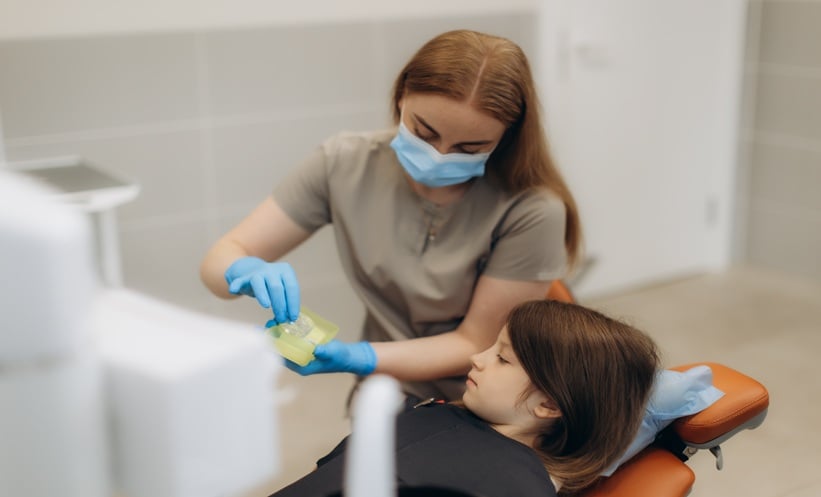The following highlights spotlight the latest developments in reproductive health, featuring abstracts presented at the European Society of Human Reproduction and Embryology (ESHRE) 40th Annual Meeting in Amsterdam, the Netherlands. From the use of assisted reproduction technology in breast cancer survivors with BRCA 1/2 mutations, to pre-implantation genetic testing for aneuploidies in women of advanced maternal age, the selected highlights bring you groundbreaking research in the field.
Citation: EMJ Repro Health. 2024;10[1]:37-41. https://doi.org/10.33590/emjreprohealth/XGVQ4942.
![]()
Assisted Reproductive Technology Linked to Higher Risk of Congenital Heart Defects
NEW research presented at the ESHRE Annual Meeting 2024 revealed elevated risks of congenital heart defects (CHD) in children conceived with assisted reproductive technology (ART), compared to those conceived through spontaneous conception (SC).
It has already been established that children born with the help of ART have a higher risk of birth defects compared to children born after SC. Notably, CHDs hold the highest prevalence among these defects, accounting for a staggering amount of 50% of all major birth defects and affecting an estimated 1.5% of children in the general population.
The large-scale registry-based cohort study included 7,747,637 live births, of which 171,735 were conceived through ART, spanning data from Denmark, Finland, Norway, and Sweden. The study found that major CHDs occurred in 1.84% of children conceived with ART, compared to 1.15% in those conceived naturally. Additionally, severe CHDs were observed in 0.35% of ART-conceived children versus 0.26% in those conceived through SC. These findings were consistent regardless of whether the children were singletons or multiples, with multiples showing the highest risk.
The analysis revealed that ART was associated with an increased risk in five out of six specific CHD lesion groups, including conotruncal defects, non-conotruncal defects, ventricular septal defects, atrial septal defects, and other CHDs. There were also no significant differences in CHD risks between different ART methods such as intracytoplasmic sperm injection and in vitro fertilisation, or between frozen and fresh embryo transfers for major or severe CHDs.
Although CHDs are rare, they are still associated with severe risks such as morbidity and mortality in both childhood and adulthood. Theses findings suggest that fetal echocardiography screening in ART pregnancies could be beneficial; however, further research is needed to confirm its effectiveness beyond routine obstetric ultrasound.
Is Flexible Progestin-Primed Ovarian Stimulation Inferior to GnRH Antagonists?
THE FIRST freeze-all, randomised controlled trial comparing the long-term outcomes of flexible progestin-primed ovarian stimulation (fPPOS) and gonadotropin-releasing hormone (GnRH) antagonists in sub-optimal responders has been conducted, with results recently presented at the ESHRE Annual Meeting 2024.
The use of medroxyprogesterone acetate for fPPOS has shown to be effective for the prevention of premature ovulation, without reducing oocyte yields. Sub-optimal responders (those with an antral follicle count of less than 10) in particular may benefit from this approach, as fPPOS results in less pituitary gland suppression than standard GnRH approaches, meaning that endogenous follicle-stimulating hormone and luteinising hormone can support follicular development more effectively in sup-optimum responders, potentially leading to a higher oocyte yield.
Researchers from Northwest Women’s and Children’s Hospital, Assisted Reproductive Technology Center, Xi‘An, China, compared fPPOS with the GnRH antagonist protocol in predicted suboptimal responders in an open-label, freeze-all randomised controlled trial. In a single in vitro fertilisation centre between July 2019–June 2023, 462 women (antral follicle count <10) referred for in vitro fertilisation/intracytoplasmic sperm injection and who did not intend to undergo a fresh transfer, were randomly assigned to fPPOS or GnRH-antagonist protocol. When the leading follicle reached 14 mm, or on the sixth day of stimulation, women in the fPPOS group were given medroxyprogesterone acetate (10 mg/day), and women in the GnRH-antagonist group were given cetrotide (0.25 mg/day).
The analysis revealed there was no significant difference in serum endocrine profiles and stimulation parameters, including the consumption of gonadotropins between individuals who received fPPOS and those who received the GnRH antagonist protocol. Within 6 months, 79.5% of women in the fPPOS group and 84.02% in the GnRH antagonist group had undergone at least one cycle of frozen embryo transfer (FET; p=0.234). The ongoing pregnancy rates per woman were 48.20% in the fPPOS group versus 52.92% in the GnRH-antagonist group (relative risk: 0.91; 95% CI: 0.76–1.09; p=0.311). Additionally, there was no difference in the ongoing pregnancy rate between the two groups regarding the outcomes of the initial FET cycle (49.01% versus 48.37%; relative risk: 1.03; 95% CI: 0.81–1.26; p=0.908). There were no significant differences in biochemical pregnancy rate, clinical pregnancy rate, and miscarriage rate per pregnancy. The results also demonstrated no difference in the number of oocytes, two-pronuclear oocytes, and viable and high-quality embryos retrieved, as well as the total number of embryos cryopreserved.
The results demonstrate that fPPOS is just as effective as the GnRH antagonist protocol in women with a predicted suboptimal response, presenting a valuable alternative for clinicians, especially when patient-specific needs or limitations influence the choice of treatment.
New AI-Enhanced System Outperforms Traditional Fertilisation Techniques
A NOVEL AI-enhanced system developed in a study led by Dimitris Manyas, Gynaecology & Fertility Hospital, Dubai, United Arab Emirates, has shown significant results in improving the rate of fertilisation in comparison to the traditional intracytoplasmic sperm injection (ICSI) method. The research, presented at the ESHRE Annual Meeting 2024, introduced the Sperm Tracer AI system, a novel AI programme that has shown promising results.
The study analysed data from 26 fresh ICSI cycles in 268 sibling oocytes, between September–December 2023. The group looked for statistically significant differences in rates of fertilisation and embryo development on Days 3 and 5. Traditional fertilisation was executed by an embryologist using group embryo culture, while fertilisation in the Sperm Tracer group was conducted through single embryo culture.
Results showed that the Sperm Tracer AI system improved fertilisation rates (odds ratio: 0.46; 95% CI: 0.23, 0.89; p=0.0224); although, there was no significant difference in the cleavage stages, blastocyst formation, or the production of high-quality embryos when compared to traditional methods.
To conduct a correlation analysis, two groups of sperm, Group A and Group B, were created from the population, both of which underwent ICSI with the Sperm Tracer system either successfully or unsuccessfully, respectively. The analysis utilised kinematic parameters including Dance (DNC) and Linearity (LIN). Group A showed a negative association with DNC and multiple linear parameters while Group B showed a negative correlation between DNC and LIN, suggesting potential effects on the linear velocity of the sperm.
Further analysis of Group A also showed robust negative correlations with additional kinematic parameters, indicating a clinical significance in sperm motility. The study results highlight the potential advantage the Sperm Tracer’s system has in improving fertilisation rates.
Despite the promising findings from the study, there are limitations, including small sample size, divergent culture embryo strategies introducing bias, and morphology analysis but no data analysis. These limiting factors could be addressed in further investigation into the efficacy of these methods to validate these results and allow them to be extrapolated.
Nevertheless, the research highlights the potential impact of the Sperm Tracer AI system on in vitro fertilisation outcomes and how the integration of this assist to traditional techniques could improve the efficiency of in vitro fertilisation.
Assisted Reproductive Technology in Young BRCA Carriers with a Pregnancy After Treatment for Breast Cancer
ASSISTED reproductive technology (ART) is safe for breast cancer (BC) survivors with BRCA1/2 pathogenic variants, according to a comprehensive global study presented at the ESHRE Annual Meeting 2024.
This international, multicentre, hospital-based, retrospective cohort study spanned 78 centres worldwide and included 4,732 women harbouring the BRCA1/2 pathogenic variants, and diagnosed with Stage I–III BC at ≤40 years between 2000–2020. Specifically, 543 women with a pregnancy post-BC diagnosis were analysed, of whom 436 conceived naturally and 107 used ART.
ART procedures varied, including embryo transfer following hormonal replacement therapy, oocyte or embryo cryopreservation at diagnosis, oocyte donation, ovulation induction, in vitro fertilisation, and intracytoplasmic sperm injection post-anticancer treatments. The researchers, led by Isotta Martha Magaton, University Hospital of Bern, Switzerland, then compared spontaneous pregnancies with ART-induced pregnancies.
Among 107 ART pregnancies, 42.1% (n=45) used cryopreserved oocytes/embryos, 30.8% (n=33) involved ovarian stimulation and in vitro fertilisation/intracytoplasmic sperm injection, and 19.6% (n=21) used oocyte donation. ART pregnancies were associated with older maternal age at conception (37.1 versus 34.3 years; p<0.001), more hormone receptor-positive BC cases (43.4% versus 30.8%; p=0.016), and a longer median time from BC diagnosis to conception (4.2 versus 3.3 years; p=0.004). Notably, there was no statistically significant difference observed in pregnancy complications between the two study cohorts (p=0.382), though ART pregnancies had more miscarriages (11.3% versus.8.8%) and fewer induced abortions (0.9% versus 8.3%).
At a median follow-up of 9.1 years, ART showed no significant effect on disease-free survival, with 13 DFS events in the ART group versus 118 in the spontaneous pregnancy group (log-rank p=0.147). Despite limitations, this study is the largest to date, providing reassuring evidence that ART is safe for young BRCA carriers seeking pregnancy.







